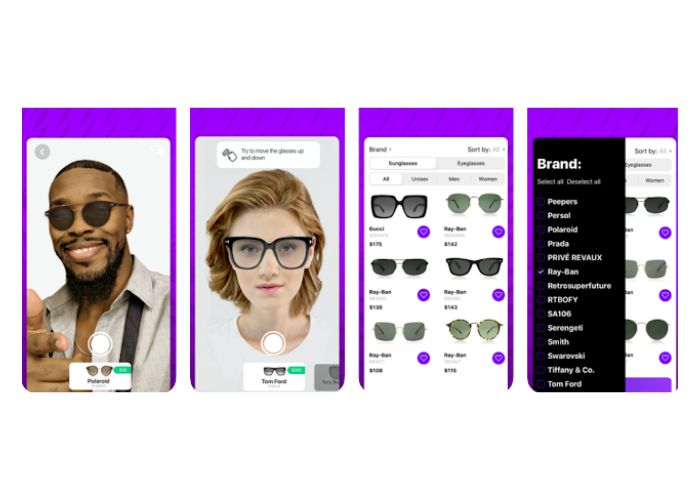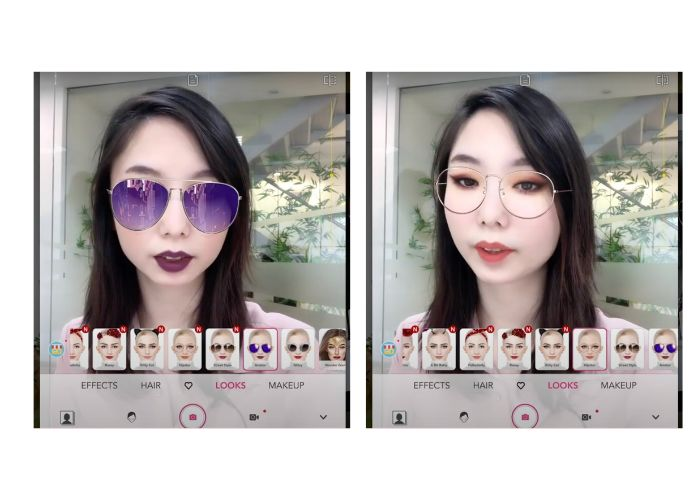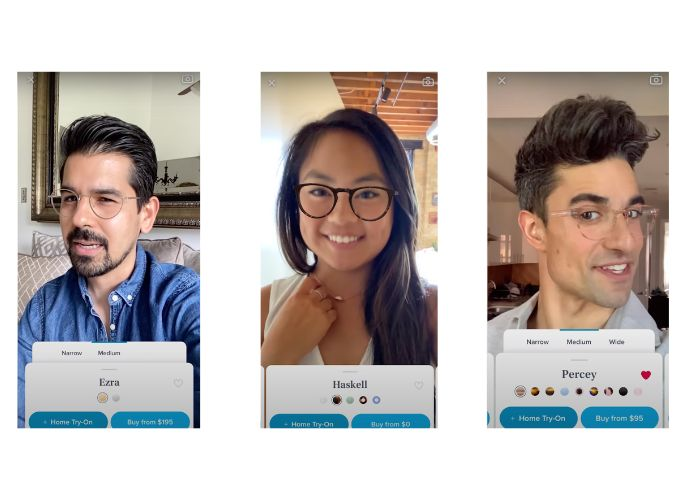Have you ever wished to try out various eyewear styles without leaving your house or spending a dime? If so, AI-powered virtual eyewear try-on might be the technology you’re looking for. This tech uses artificial intelligence and computer vision to scan your face and digitally superimpose glasses onto your image. You can then adjust the glasses’ size, position, and orientation to fit your face, giving you a comprehensive view from different angles.
AI-powered glasses try-on can help you find the perfect pair of glasses frames that complement your style, personality, and budget. This tech allows you to experiment with different shapes and colors of glasses that you might not typically choose. In this blog post, we’ll introduce you to some of the top AI glasses try-on apps and websites currently available. We’ll also compare their features and provide tips on maximizing the benefits of this technology.
Distinguishing between Virtual Try-on tool and AI Glasses Try-on
Although the terms “virtual try-on” and “AI glasses try-on” are often used interchangeably, they can refer to different aspects of the technology that enables users to virtually try on new glasses via their screens. Here’s a potential differentiation:
- ‘Virtual try-on’ is a more general term covering digitally placing glasses onto a user’s face using a photo, video, or live camera feed. ‘AI glasses try-on’, however, is more specific, denoting the use of artificial intelligence and computer vision to scan a user’s face and adjust the glasses accordingly.
- Virtual try-on can be either 2D or 3D, depending on the realism and interactivity of the glasses. In contrast, AI glasses try-ons are usually 3D, allowing glasses to be viewed from multiple angles and perspectives and adapt to the user’s movements and facial expressions.
- Virtual try-on may be static or dynamic, depending on how the glasses are fitted onto the user’s face. AI glasses try-on, though, are usually dynamic, automatically measuring the user’s pupillary distance (PD), facial shape, and preferences to suggest the most suitable glasses.
- Virtual try-on can be either AR-based or non-AR-based, depending on the integration of the glasses with the user’s environment. AI glasses try-ons are typically AR-based, enabling the glasses to blend seamlessly with the user’s background and lighting conditions, simulating features like anti-fog, light-adaptive, or tinted lenses.
These differences aren’t absolute, and some apps or websites may interchangeably use these terms or combine features of both. The primary objective of these technologies is to provide a convenient, enjoyable, and realistic way for users to shop and discover their ideal pair of glasses, whether online or in-store.
Top AI Glasses Try-On apps and websites
Now that you’re familiar with AI glasses try-on technology and its benefits let’s explore some of the best apps and websites offering this feature. We’ve selected four examples that cater to different types of glasses and platforms. We will compare their features and provide our honest assessment of their pros and cons.
- Ideofit: This app lets you try on glasses and sunglasses from various brands like Ray-Ban, Oakley, Dior, and more. You can use your phone’s camera or upload a photo and see how the glasses fit your face. The app allows you to adjust the size, position, and angle of the glasses and change the background color. It also offers feedback on your face shape and recommends suitable glasses. While the app is user-friendly and offers an extensive collection of glasses, it is available only for iOS devices. Some glasses may not look realistic or accurate on your face.

- YouCam Makeup: Primarily a selfie editor with numerous beauty features, this app also includes a glasses try-on feature, allowing you to virtually wear different styles and colors. You can use your phone’s camera or upload a photo to see how the glasses look on you. You can adjust the size, position, and angle of the glasses and apply filters and stickers to enhance your look. The app is enjoyable and easy to use, with a wide range of glasses available. However, it focuses more on beauty than eyewear; some glasses might not suit your face shape or size.

- GlassOn: This app is a valuable tool for trying on eyewear available for online or in-store purchases. You can use your phone’s camera or upload a photo to see how the glasses look on you. The app allows you to adjust the glasses’ size, position, and angle and change the lens color and tint. It also automatically measures your pupillary distance (PD), which is crucial for ordering glasses online. The app is accurate and realistic and offers a variety of glasses to try on. However, it is only available for Android devices, and some glasses might not be available in your region.

- Warby Parker: This online retailer of eyeglasses and sunglasses provides a 3D AR-based glasses try-on feature. You can use your computer’s webcam or phone’s camera to see how the glasses fit your face in real-time. You can also move your head to view the glasses from different angles. The website offers recommendations based on your face shape and preferences. It is user-friendly and features a high-quality selection of glasses to try on. However, the website only sells its own brand of glasses, and some styles may be out of stock or unavailable in your area.

As demonstrated, there are numerous AI glasses virtual try-on feature full-on apps and websites to help you find your perfect pair of glasses. Each option has its own advantages and drawbacks, so we recommend trying them out for yourself to determine the best fit.
Tips and tricks to maximize AI glasses Try-On
Now that you’re aware of some of the best AI glasses try-on apps and websites, you might be wondering how to optimize this technology to find your perfect pair of glasses. Here are some tips to guide you:
- Choose a quality photo or video: If you’re using a photo or video to try on glasses, ensure it’s clear, well-lit, and shows your face front-on. Avoid wearing any accessories or makeup that could interfere with the glasses. If you prefer a real-time experience, use a live camera feed.
- Experiment with styles and colors: AI glasses try-on allows you to explore hundreds of styles and colors without hassle. Use this opportunity to discover new styles or colors that you might not have considered before.
- Compare different glasses: The technology lets you easily compare different glasses. You can see how they fit your face shape, enhance your features, and get recommendations based on your preferences and needs.
- Share your look: AI glasses try-on also enables you to share your look with others to get their opinions. You can send your photos or videos to friends and family via social media or messaging apps or post your look on the app or website to get feedback from other users or experts.
- Consider your lifestyle and needs: While trying different glasses, consider your lifestyle and visual needs. For example, if you spend much time outdoors, look for glasses with UV protection or anti-glare features. Consider glasses with blue-light-blocking lenses if you use a computer for long hours.
By following these tips, you can make the most of AI glasses try-on technology and do your search for the perfect pair of glasses enjoyable and efficient. This technology not only saves time and effort but also opens up a plethora of options you might not have access to in a physical store.
